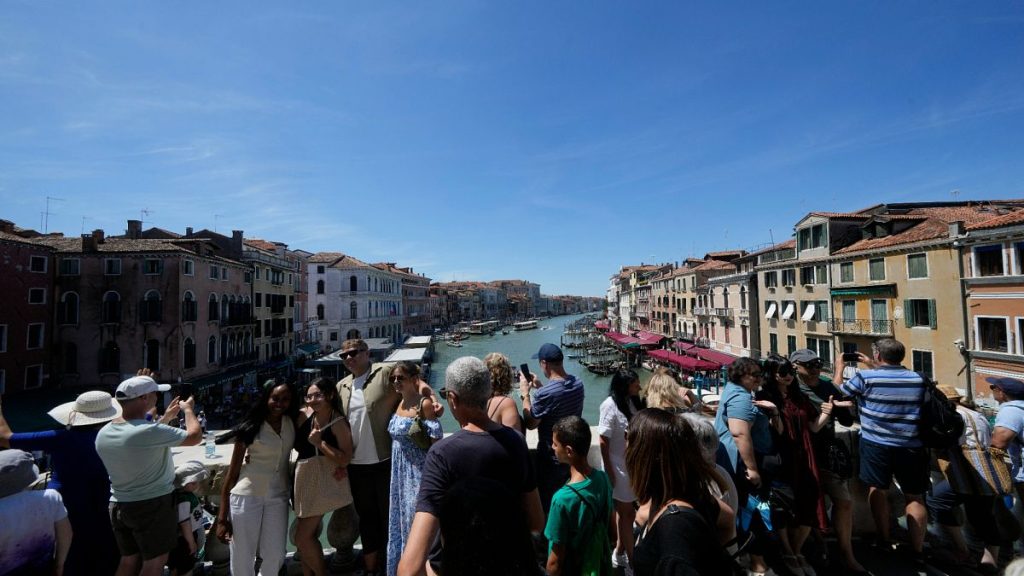Venice’s Daytripper Tax: A Bold Experiment with Mixed Results
Venice, the enchanting city of canals and centuries-old architecture, recently concluded the second year of its controversial daytripper tax trial. For 54 days spread across April, May, June, and July of 2025, tourists visiting the city for a single day were required to book in advance and pay a fee—unless they qualified for exemption. The initiative represents Venice’s ambitious attempt to address the overwhelming influx of “hit and run” tourism that has increasingly strained the city’s delicate infrastructure while providing minimal economic benefit to its permanent residents. “Initial data, though still provisional, show a mature system capable of providing initial responses to the objectives of regulating tourist flows and ensuring fair contributions between overnight stays and day visitors,” the city council stated optimistically. However, a closer examination of the numbers reveals a more nuanced reality: day visitor numbers only marginally decreased compared to the previous year, with peak dates still attracting nearly 25,000 tourists—an astonishing figure equivalent to half of Venice’s resident population. This year’s implementation included a penalty for last-minute planning, doubling the fee from €5 to €10 for those booking less than four days in advance, yet remarkably, almost half of all visitors still opted to pay the higher rate, suggesting the deterrent effect was minimal.
The financial results of the experiment appear impressive at first glance. The 2025 trial generated €5,421,425 from 723,497 paying visitors—nearly double the revenue collected in 2024, though it’s worth noting that last year’s trial ran for only 29 days compared to this year’s 54. Approximately 51 percent of visitors planned ahead and paid the standard €5 fee, while 49 percent paid the elevated €10 last-minute rate. The city also stepped up enforcement efforts, deploying around 140 inspectors daily who conducted over 445,000 QR code checks throughout the trial period. These checks identified approximately 2,500 visitors who had failed to pay the required fee, demonstrating the logistical challenges of implementing such a system in a city that welcomes millions of visitors annually through multiple entry points by land and sea.
When examining the impact on actual visitor numbers, the results appear less dramatic than officials might have hoped. The daily average of paying daytrippers was 13,046 in 2025, representing only a modest decrease from the 16,676 daily average recorded in 2024. As the city council itself acknowledged, this reduction aligns with a broader regional trend of slightly decreased tourism observed by the Regional Statistics Office, suggesting factors beyond the daytripper fee may be responsible. The busiest day during the 2025 trial period was Friday, May 2nd, which saw 24,951 paying daytrippers—a number that vividly illustrates the ongoing pressure of mass tourism, as it exceeds half of Venice’s resident population. The data also revealed interesting patterns in visitation: Saturdays consistently drew the highest numbers, followed by Fridays and then Sundays, information that could prove valuable for travelers seeking to avoid the most crowded periods.
While the fee hasn’t significantly reduced overcrowding on peak days, Venice’s city council has emphasized that the revenue will benefit local residents. After deducting management costs, they’ve pledged that “at least €1.5 million” will be allocated toward reducing the city’s waste tax for permanent residents—a direct financial benefit for locals who bear the burden of tourism’s impacts year-round. Yet for many critics, including opposition councillors like Monica Sambo of the Democratic Party, the experiment has fundamentally failed to achieve its primary goal. “It’s clear: the experiment didn’t work. The entrance fee, presented as a tool to manage tourist flows on the busiest days, hasn’t led to any significant reduction in admissions,” Sambo told local media. “In fact, the city council itself admits that on some days, attendance actually increased. It’s therefore clear that this measure has nothing to do with city governance.”
The heart of the debate extends beyond visitor numbers and revenue figures to the very survival of Venice as a living city rather than an open-air museum. Critics argue that effective solutions must address the root causes of Venice’s population decline, which has seen residents steadily relocating to the more practical mainland areas. The historic center now faces the sobering reality that tourist accommodations outnumber permanent residents, whose population has dwindled to a historic low of just 48,500. Opposition voices are calling for policies that genuinely encourage repopulation of the historic center, particularly through restrictions on short-term rentals that have transformed residential buildings into tourist lodgings. Without such fundamental changes, they argue, Venice risks becoming a hollow tourist attraction devoid of the authentic community life that has defined it for centuries.
The Venice daytripper tax experiment encapsulates the complex challenges facing historic destinations worldwide in the age of mass tourism. While generating revenue that can benefit local services, the fee alone appears insufficient to meaningfully reduce tourist pressure or reverse the exodus of residents. As Venice evaluates the results of this second trial year, the city stands at a crossroads—balancing its economic dependence on tourism with the urgent need to preserve its unique urban fabric and community. The experiment offers valuable lessons for other overwhelmed destinations considering similar measures: financial mechanisms alone may not solve overtourism without complementary policies addressing housing, quality of life, and sustainable development. For Venice, the ultimate success of the daytripper tax will not be measured in euros collected but in whether it contributes to a more balanced relationship between visitors and residents in this extraordinary floating city, ensuring that Venice remains not just a backdrop for tourist photographs but a vibrant, living community for generations to come.


